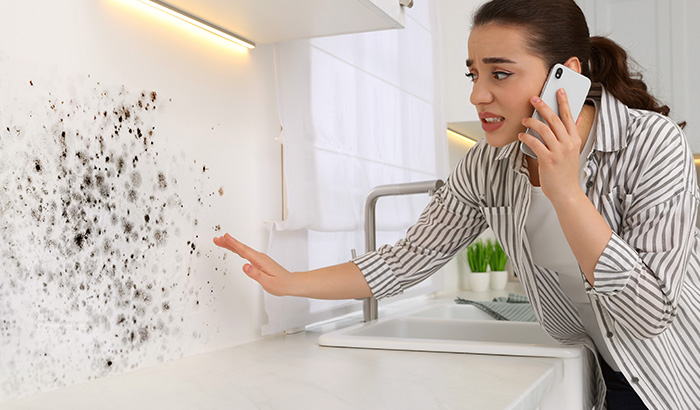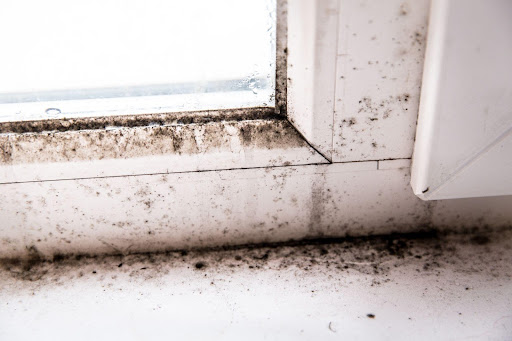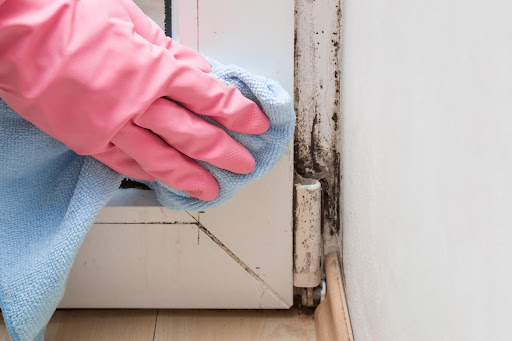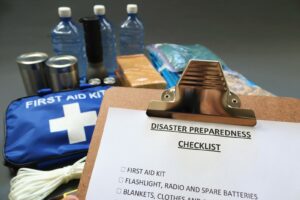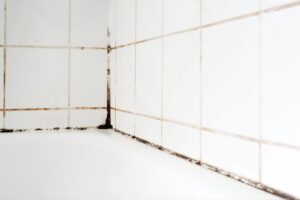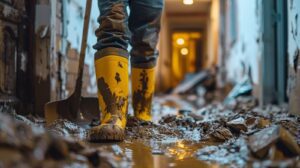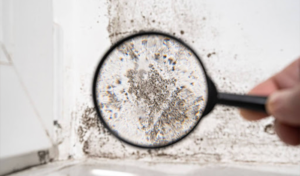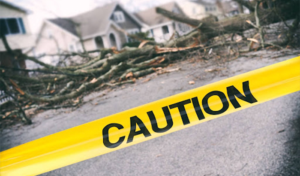Mold growth — whether it’s at home or the office — can lead to significant health risks and property damage, making mold removal crucial. If left unaddressed, mold damage can spread rapidly and cause structural issues that are time-consuming and costly to repair.
That’s why it’s crucial to understand the mold remediation process and the importance of hiring professionals for effective mold removal.
In this blog, we will delve into the ins and outs of mold remediation, exploring each step involved in the process. From isolating the contaminated area to cleaning and preventive measures, we’ll uncover how mold remediation tackles the problem of mold damage head-on.
By the end, you’ll understand what it takes to eliminate mold and restore a safe and healthy living environment. Keep reading to learn everything you need to know about mold remediation.
Pre-Remediation Process
Before mold remediation occurs, it is essential to thoroughly inspect the affected area, assess and document the extent of the damage, and take measures to protect non-damaged areas. Let’s look at how each phase of this process works so you’ll know exactly what to expect.
Inspecting the Affected Area
The first step in mold pre-remediation is identifying and locating the affected areas. Inspecting the area requires a systematic approach, which involves checking for visible mold growth, detecting mold odors, and utilizing various equipment.
- Check for any visible mold growth: Conduct a comprehensive visual inspection of the affected area and surrounding areas to locate any visible mold growth. Look for discoloration, staining, or any other signs of mold growth.
- Detect mold odors: In some cases, mold growth may not be visible, but you can detect a musty odor. Sniffing extensively throughout the area may help identify the mold smell’s source.
- Utilize equipment: Use moisture meters, thermal imaging cameras, and humidity sensors to detect areas with excess moisture. These tools can help to detect mold growth behind walls, ceilings, and other hidden spaces.
Assessing and Documenting the Damage
Once the affected area is identified, the next step is to assess and document the extent of the damage. This assessment should include:
- Quantifying the affected area: This involves determining the size and location of the mold infestation to develop an appropriate remediation plan and estimate the costs involved.
- Determining the type of mold: Identifying the mold type will help establish the appropriate remediation process and the necessary precautions to take.
- Evaluating the damage to the structure and personal items: Assessing the extent of the damage to the building’s structure and any personal items present in the affected area will facilitate the remediation process.
Measures to Protect Non-Damaged Areas
During the pre-remediation process, it is critical to prevent cross-contamination and ensure mold spores do not spread to non-damaged areas. Some of the measures to protect non-damaged areas include:
- Containment of the affected area: Use plastic sheets, tape, and negative air pressure machines to isolate and contain the affected area.
- Use of Personal Protective Equipment (PPE): Workers should wear PPE, such as respirators, gloves, and protective clothing, to avoid spreading mold spores.
- Disabling HVAC systems: Turning off air conditioning or heating systems to prevent the release of mold spores to other areas of the building.
- Covering surfaces and furniture: Covering unaffected surfaces and furniture with plastic sheets will enable easy cleanup after remediation.
Remediation Process
Isolating the Contaminated Area
One of the first steps in mold remediation is isolating the contaminated area to prevent mold spores from spreading to other areas of the home or building. This is achieved by:
- Setting up containment measures: Create physical barriers and seal off the affected area using plastic sheets and tape to prevent cross-contamination.
- Using negative air pressure machines: Install air filtration devices, such as high-efficiency particulate air (HEPA) filters and exhaust fans, to create negative air pressure inside the containment area. This helps to ensure that any airborne mold spores are captured and not dispersed to uncontaminated areas.
Removing Mold-Damaged Items
The next step is the careful removal of materials affected by mold growth. This includes:
- Identifying and removing mold-infested materials: This involves removing materials such as drywall, insulation, carpets, and furniture that are extensively contaminated and cannot be cleaned effectively.
- Proper waste management: Ensuring that the removed materials are properly bagged and sealed to prevent further contamination during transportation. Following local regulations and guidelines for properly disposing of mold-contaminated materials is crucial.
Disinfecting and Cleaning the Area
After removing the impacted materials, the affected area needs to be thoroughly cleaned and disinfected to eliminate any remaining mold spores and prevent regrowth. This process typically entails the following:
- Vacuuming with HEPA filters: Use HEPA vacuum cleaners to remove loose mold spores from surfaces and within the containment area.
- Using specialized cleaning solutions: Apply appropriate disinfectants and fungicides to clean and sanitize the affected surfaces. This helps to kill any remaining mold spores and prevent their reemergence.
- Scrubbing and wiping surfaces: Using brushes, sponges, or cloths to remove mold growth from hard surfaces physically. Thoroughly cleaning all surfaces within the containment area is crucial to ensure complete mold removal.
Air Quality Testing and Control
Air quality testing and control should be conducted to ensure that the environment is safe after remediation. This involves:
- Conducting air quality testing: Sample the air in and around the remediated area to verify that the spore levels have been reduced to acceptable levels.
- Utilizing HEPA air scrubbers: Run HEPA air filtration devices during and after remediation to further filter and purify the air, removing any remaining mold spores and particulates.
- Monitoring humidity levels: Maintain appropriate humidity levels in the area to prevent future mold growth. Keeping humidity below 60% is generally recommended to inhibit mold growth.
Follow-Up Inspection
After completing the remediation process, a follow-up inspection should be performed to ensure the mold growth is effectively addressed. This includes:
- Visually inspecting the area: Check for any signs of residual mold growth or water damage.
- Assessing the effectiveness of remediation: Verify that the remediation process successfully eliminated the mold and that the area is now clean and safe.
- Conducting additional air quality testing: Take air samples to confirm that the mold spore counts are within acceptable levels.
By following these remediation steps, you can effectively mitigate and eliminate mold growth, ensuring a safe and healthy indoor environment.
Hiring a Professional Mold Remediation Team
You might not feel up to tackling mold removal on your own, and that’s okay! Numerous benefits come with hiring a professional mold remediation team, including:
- Expertise and experience
- Proper equipment and techniques
- Thorough inspection and assessment
- Safe and effective remediation
- Preventing future mold growth
Mold removal experts have the knowledge, tools, and equipment to remediate your home successfully. However, not every mold restoration company is the same. If you decide to hire a mold remediation company, we recommend looking for the following qualities to ensure your home’s effective remediation and your peace of mind:
- Certification and licenses
- Insurance coverage
- Adherence to industry best practices and standards
- Detailed remediation plans
- Clear communication and professionalism
You can easily find out if a mold remediation company is licensed and certified by looking at their website or contacting them. You can also ask them about their process to ensure that all the bases are met. Any reputable restoration company will understand and be happy to help you and answer any questions you may have along the way.
Work With Total Flood and Fire Restoration for Your Mold Remediation Needs
No one ever wants to find mold in their home or office, but it unfortunately does happen. When it does, you want to be armed with the right tools to take your home or office back. That’s where Total Flood and Fire Restoration comes in.
With years of experience remediating mold, we can take care of even the worst mold disasters. Our services go beyond mold, too. We also take care of water, fire, and storm damage, all of which can be related to mold damage.
Call us at 385.483.2109 or fill out the form on our website to schedule your mold removal appointment. Remember, when it comes to mold — the sooner you call, the better!

